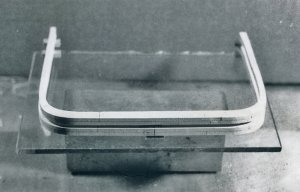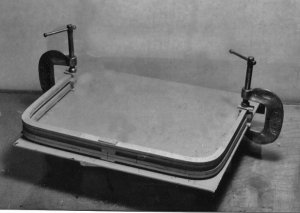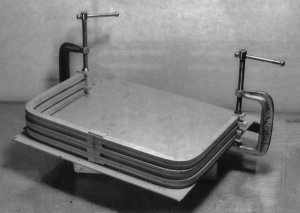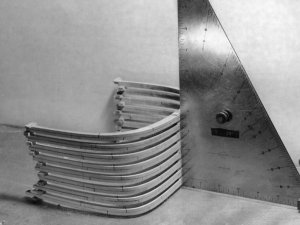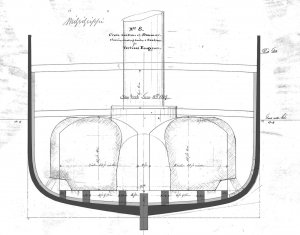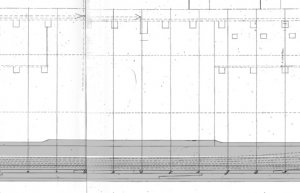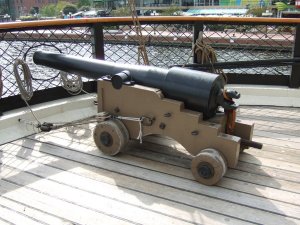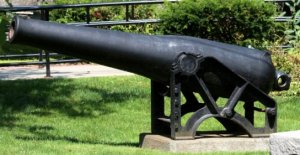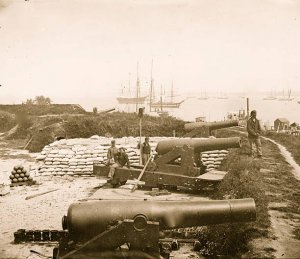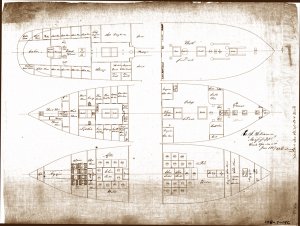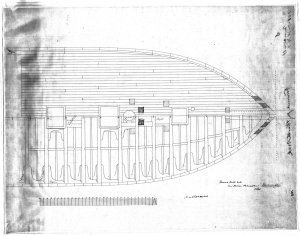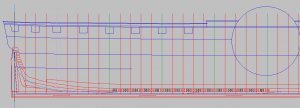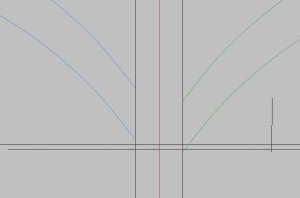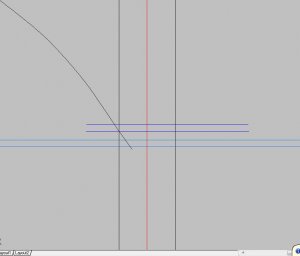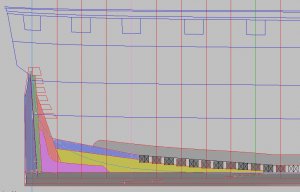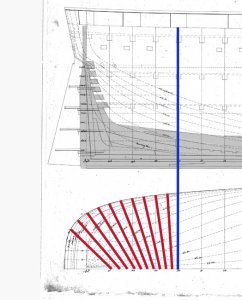- Joined
- Dec 1, 2016
- Messages
- 6,341
- Points
- 728

end of the week and an up date on drawing frames. Yup 21 frames done and about 65 more to go.
What I started doing was to draw the frame to the deck line (top row) later adding the bulwark, then realized from Winston's bomb vessel cross section build when you break down the frames into floors and futtocks the laser is taking out .012 thousandths top and bottom of each piece and with 5 ends per frame that is 5 X .012 so the frames total length will be short of the sheer line.
that black line running above the hull and frames is a Harold Hahn idea to create an upper base line, you can see in the second line the frames extend above the hull sheer line. It is a far better idea to create a jig above the hull rather than sitting the hull into a jig. When the hull sits in the jig that jig blocks any work to sand the hull or add wales etc. The purpose of using a jig in the first place is to hold the frames in place so you can sand and secure the framing, if you have to remove the hull first before you can do work that defeats the purpose of the jig.
Just at this stage of a project you have to pre plan and think ahead so you don't build yourself into a situation you can not correct later.
This hull has filler frames between the floors making the bottom of the hull a solid structure so the build and stack method might work

What I started doing was to draw the frame to the deck line (top row) later adding the bulwark, then realized from Winston's bomb vessel cross section build when you break down the frames into floors and futtocks the laser is taking out .012 thousandths top and bottom of each piece and with 5 ends per frame that is 5 X .012 so the frames total length will be short of the sheer line.
that black line running above the hull and frames is a Harold Hahn idea to create an upper base line, you can see in the second line the frames extend above the hull sheer line. It is a far better idea to create a jig above the hull rather than sitting the hull into a jig. When the hull sits in the jig that jig blocks any work to sand the hull or add wales etc. The purpose of using a jig in the first place is to hold the frames in place so you can sand and secure the framing, if you have to remove the hull first before you can do work that defeats the purpose of the jig.
Just at this stage of a project you have to pre plan and think ahead so you don't build yourself into a situation you can not correct later.
This hull has filler frames between the floors making the bottom of the hull a solid structure so the build and stack method might work




